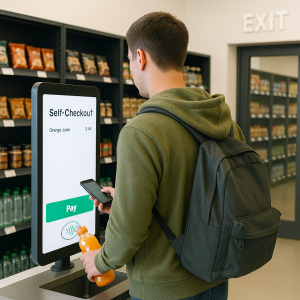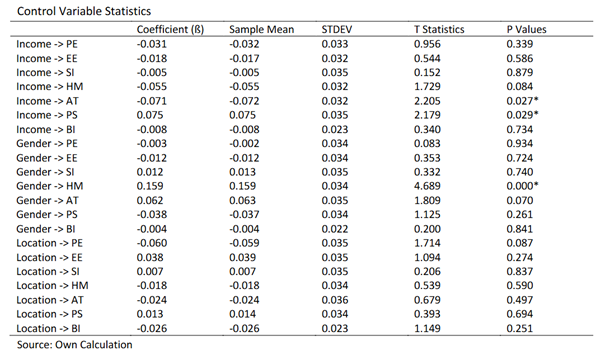A Study of Unmanned Store Adoption among University Students:
A Control Variable Perspective
Eszter Szabó-Szentgróti – Petra Kinga Kézai – Szabolcs Rámháp

This article investigates the extent to which students in Hungarian higher education institutions are willing to adopt the new cashier less and unmanned technology in the retail sector. The study explores the factors influencing attitudes toward cashierless shopping, using the extended Unified Theory of Acceptance and Use of Technology (UTAUT2) as the theoretical framework. By analyzing responses from 843 participants from university students in Hungary.
Why should we focus on this topic?
Over the past two decades, the rapid growth of artificial intelligence (AI) and other immersive technologies has fundamentally reshaped consumer behaviour, transforming technology acceptance from a novelty into an everyday necessity. AI has revolutionized the way consumers interact, shop, and engage with services with significant effects on the retail industry, which faces numerous challenges as a result. Since 2015, a new trend has emerged within retail: the development of unmanned, cashierless stores by numerous start-ups. In 2021, the global market size of cashierless convenience stores exceeded $67 million, and it is projected to grow to more than $1.64 billion by 2028. Although these stores are most prevalent in the United States and Asia, their expansion in Europe is currently underway, with market penetration expected to increase. This technology, driven by AI, has the potential to completely automate traditional retail spaces, minimizing human interaction. The consumer journey in a cashierless store starts with downloading the store’s app, registering, and making purchases without the need for traditional checkout processes.
The paper is structured around the two research questions:
- How does income influence latent variables?
- What role does gender play in shaping these variables?
- To what extent do geographical disparities (location) affect latent variables?
Methodologically, the study employed variance-based structural equation modelling (PLS-SEM) to analyse and test the proposed research model.

The results revealed that performance expectancy, effort expectancy, social influence, and hedonic motivation had a strong and positive influence on behavioural intention toward using cashier less stores. Regarding the control variables, significant relationships were identified between income and atmosphere variable, as well as income and price sensitivity. Furthermore, gender was found to have a significant influence on hedonic motivation, suggesting that these demographic factors play a moderating role in shaping attitudes toward unmanned store technology.
The findings of this study provide valuable insights for practitioners and policymakers in the retail industry who are considering the implementation of cashier less technology. The diffusion of this technology is expected to grow, making it crucial to investigate factors that influence not only intentions but also the actual use of unmanned stores.
 Eszter Szabó-Szentgróti, Petra Kinga Kézai, & Szabolcs Rámháp. (2025). A Study of Unmanned Store Adoption among University Students: A Control Variable Perspective. Decision Making: Applications in Management and Engineering, 8(1), 364–379. https://doi.org/10.31181/dmame8120251371
Eszter Szabó-Szentgróti, Petra Kinga Kézai, & Szabolcs Rámháp. (2025). A Study of Unmanned Store Adoption among University Students: A Control Variable Perspective. Decision Making: Applications in Management and Engineering, 8(1), 364–379. https://doi.org/10.31181/dmame8120251371

